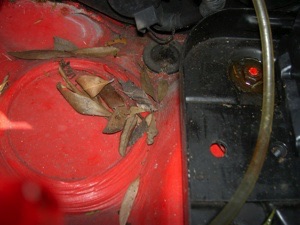Published in the October 2018 issue of “Die Porsche Kassette”
Ⓒ2018 Technolab / PedrosGarage.com

For more information on water incursion and more, please visit my website:
www PedrosGarage.com.
Happy Porsche'ing,

In past tech articles published here, we’ve discussed many of the different components that govern our car’s systems. Today we’ll discuss the Central Locking Unit or CLU (sometimes called the Immobilizer).
The CLU is found in all 986, 987, 996 and 997 (Boxsters ’97 -‘12, Caymans ’06 -’12 and Carreras ’99 -‘12).
This little black box controls, among others:
• Keyless entry (remotes)
• Electric windows
• Front and rear trunk lids
• Power locks
• Cabin motion detection
• Alarm
• Immobilizer function
• Soft top operation
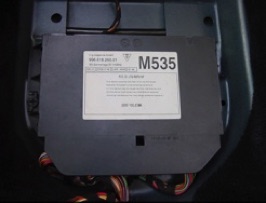
As you can see from the list of items it controls, it’s an important part for your car and care should be taken to keep it in good working order.
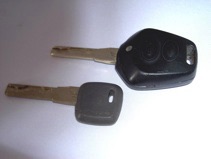
The CLU is basically a computer with a memory that can only be programmed once. It stores in memory the security codes for each one of the keyless entry remotes as well as the security codes for each of your keys’ immobilizer “pills”.
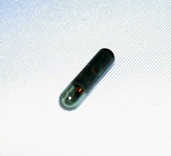
The CLU is a very reliable unit that should give you years of trouble-free operation but there’s one very important issue: Porsche located it in the lowest point of the passenger cabin, under the driver’s seat. It is very well protected, but if there is water incursion into the cabin, from a window left open during a rainstorm or from clogged drains, it will flood. If this happens to you, DO NOT put the key in the ignition or try to operate any electrical component.
As soon as possible, disconnect the negative side of the battery.
Remove the four bolts that secure the driver seat rails to the car’s floor panel. Lean the seat’s backrest forward as far as it will go and then lift the bottom front edge of the seat past the bottom of the steering wheel. Now, just let the steering wheel support the seat in place and you’ll have ample room to inspect and work on the CLU.
If there is a lot of water you need to remove it quickly so no more damage is done. You can completely remove the seat(s) to allow for better aeration. I’ve used a wet-dry vacuum with much success to take most of the water out of the carpet. Afterwards, an electric fan will help dry the rest (generally overnight).
One important note is that we’re talking about fresh water. If the incursion was sea water the CLU (and most of the electrical harness and components are toast. Don’t waste your time. Call your insurance company and don’t be surprised if they want to total the car.
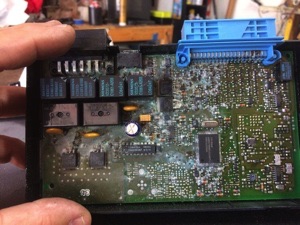
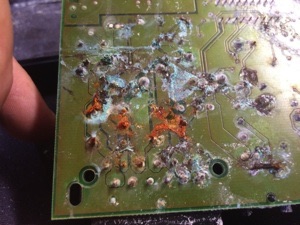
Getting back to the CLU, remove it by turning the plastic fastener ¼ turn counter-clockwise with a Phillips screwdriver. Lift the front edge and pull the unit forward. This releases it from the chassis and gives you enough room to disconnect the two wiring harness connectors.
Take the unit out of the car and open the plastic case. It’s closed with multiple plastic lock-tabs that can be pried open with any edged tool.
Remove the printed circuit board from the plastic case and inspect carefully. If it has been flooded you will most likely see discoloration and or oxidation of the circuit board.
Place the circuit board in a shallow plastic container just a bit bigger than the board itself and pour isopropyl alcohol over it until it is fully immersed (you can find isopropyl alcohol at any pharmacy or home improvement center). Leave it immersed for at least 30 minutes. During that time you can softly brush away any oxidation or deposits with an old toothbrush or similar. Isopropyl alcohol will displace all of the water on the different components of the circuit board.
After the 30 minutes, remove the board from the alcohol, let it drip as much as possible and place on a clean, dry paper towel. Don’t try to heat or blow-dry it. Let it dry at room temp for a couple of hours.
After everything is dry, including the carpet, reassemble the CLU and return to it’s original location. Note that there is a small blue micro fuse on one edge of the CLU’s case. Check to make sure it’s not blown and replace with a new one if it has.
Reconnect the wiring harness and secure the CLU in place with its fastener.
Reconnect the negative battery cable and test your unit. If you caught it in time chances are very good that you can get it back in full operation. I’ve been successful in about 60% of the cases.
If the unit was damaged beyond repair, you’ll have to get it replaced. It will have to be a new unit (which can be costly) because as we explained earlier it cannot be reprogrammed.
To program a new CLU, a PST-II or PIWIS unit must be used and the tech doing the programming also needs to have your car’s specific IPASS codes that are only available from Porsche so that they can put back the original codes for the remote(s) and the key(s).
Always make sure that the windows are fully closed, especially in the rainy season. Also, there are several drains around the car that need to be kept clean of debris always. If these are clogged, as strong downpour can overwhelm them and water will flood the cabin.
Boxsters, Caymans and Carreras have two drains in the front. One on each side of the battery tray, towards the firewall.
Boxsters also have a very important drain at the bottom of where the convertible top pivots.
The best way to make sure they can drain well is by using a hose with a jet nozzle. Put the nozzle right up against the drain hole and let the water pressure clean it out. Water will drain out the bottom of the car.
